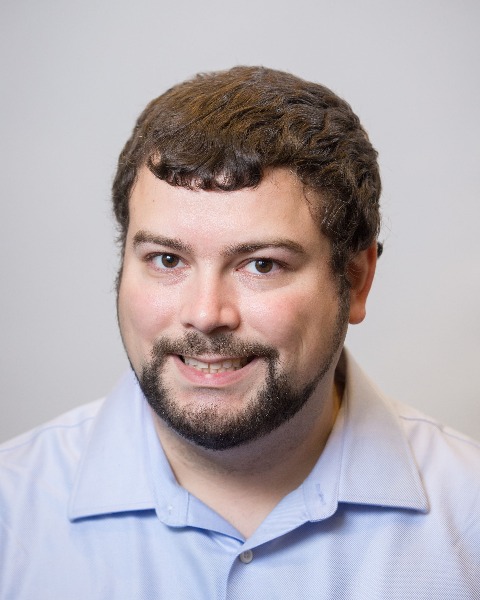Drug Delivery
Silicone- Refillable device for Wound Healing Optimization
(L-473) Silicone- Refillable device for Wound Healing Optimization
- NT
Naaz Thotathil
Student
UMass Amherst
Burlington, Massachusetts, United States 
John J. Amante (he/him/his)
PhD Candidate
University of Massachusetts Amherst
Amherst, Massachusetts, United States- CK
Cathal Kearney
Assistant Professor
University of Massachusetts Amherst, United States - KM
Keegan Mendez
Student
MIT, United States - DR
Dr. Ellen Roche
Associate Professor
MIT, United States
Presenting Author(s)
Co-Author(s)
Last Author(s)
Co-Author(s)
When the skin is injured, there is a careful sequence of events that occur to repair the damaged tissue: homeostasis, inflammation, proliferation, and then maturation. These are timed steps in the wound-healing cascade that when delayed due to external factors – such as stress, infection, disease, etc, – can result in chronic wounds. Since there are signaling factors in the body that coordinate this cascade, it is important to consider the rhythmic and timed delivery of drugs to optimize wound healing. Another important biological timing component to consider is the human body’s 24-hour circadian cycle. Research has shown that daytime-occurring wounds heal 60% faster than night-time occurring wounds; thus, circadian-timed signaling may also play a role in successful wound healing. Researchers have created technology for controlled drug release using stimulus-driven methods such as ultrasound, temperature, electromagnetic radiation, etc. One more recent method of drug delivery that is being explored is soft robotics systems, which can be precisely controlled, making them suitable for carefully timed delivery of drugs. We have developed a silicon-refillable device that allows for repeated administration of therapeutics at user-defined times and doses. The device is a silicone pump with two adjacent chambers: one chamber air-filled for trigger-pressure input; the other chamber is drug loaded with a pressure-sensitive release valve. Modulating the input pressure, the pressure chamber will push against the drug chamber, enabling on-demand drug release. Given the user-defined triggering system, the refillable pump can be made to release drugs with set times, doses, and rhythms.
Materials and Methods::
The device is a silicone pump created with low stiffness and 18G pore. The pump has two tubes connected to two chambers separated by a diaphragm. Chamber one is an air-filled chamber for trigger-pressure input and chamber two is for drug loading with a pressure-sensitive release valve (see Figure 1a). There are two inlets connected to chamber two allowing for pressure control and refilling the device. The pump is attached to a syringe pump that is used to drive an input volume range between 1000-1600µL for a full release. To control the air pressure within the device through the inlets, a 3-way leur lock is used. Following the characterization and optimization of the device using food dye solution, therapeutics such as antibiotics and adeno-associated virus were released to demonstrate the capability and versatility of the pump. The bioactivity of the antibiotic was tested by releasing Doxycycline (1µL/mL) onto e-coli biofilms and measuring dead stain using Hoechst 33342 solution. The data was normalized to the negative control. The bioactivity of virus was tested by releasing AAV-eGFP onto 30,000 HEK293T cells with an MOI (Multiplicity of Infection) of 1 and measuring the expression of green fluorescent protein (GFP) using flow cytometry. The partial release groups were performed by releasing one fill of 350µl therapeutic split into thirds (partial release = 116µl therapeutic). Positive controls consisted of stock solution at the equivalent concentrations and volumes that were not passed through the device.
Results, Conclusions, and Discussions::
We characterized and optimized the pump’s ability to have controlled and consistent repeated release by recording the release of food dye solution at increasing input air volumes following a singular fill (i.e., pump to 1000µl, retract to 0µl, pump to 1200µl…, see Figure 1b). We also confirmed that there is no release from the device prior to – or in between triggering – until the air volume is increased past the previous threshold (see Figure 1c). The device is also able to release at a consistent range (17.7 – 24.0µl at 1000µl air volume) up to 12 times with refills in between each repetition (see Figure 1d). Next, Doxycycline was released onto e-coli biofilms and showed a decrease in viability with a partial release (116 µl of 1 µl/ml antibiotic) (see Figure 1e). We found a fold change of 1.15 for the positive control in comparison to 1.05 for the partial release. Next, the ability to release biologically active virus was performed with AAV-eGFP onto HEK293T cells with an MOI of 1 (see Figure 1f). The positive control was found to have transduced 88.9% of cells, while the partial release transduced 76.2% of cells. The bacterial and viral transduction shows the pump’s ability to hold and release bioactive cargo. Ongoing work is demonstrating the ability to repeatedly release varying bioactive doses from our devices. Longer term, biological agents relevant to wound healing will be released from the device to drive synchronized wound healing.
Acknowledgements (Optional): :
References (Optional): :
